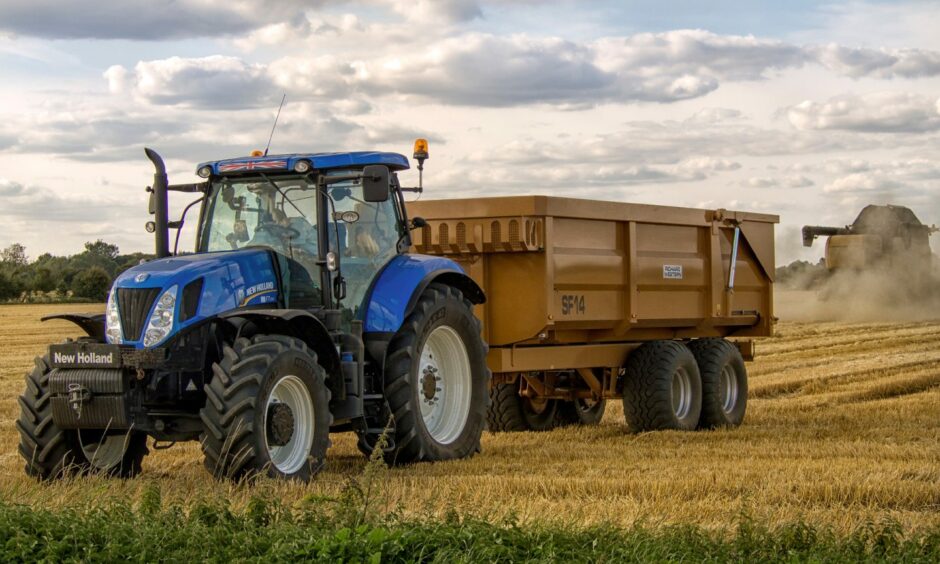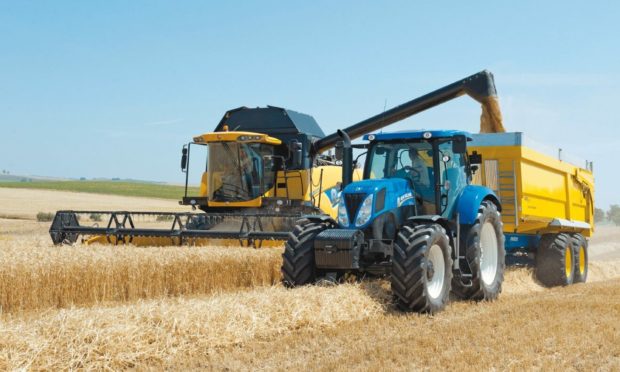Combine greased up, engine oil checked, tyre pressures adjusted; done.
Grain dryer inspected, fired up, augers and conveyors running; done. Grain store swept, vacuumed and treated for over-wintered pests; done. All set for harvest, then.
Except for another couple of items to add to the checklist that should help the impending grain and oilseeds harvesting campaign go smoothly and safely.
With the spotlight focused on the main factors in the harvesting performance – the combine and grain store – it’s easy to overlook the supporting cast of tractors and trailers.

With the tractors, it’s excess baggage that needs to be dealt with, removing those front-end ballast blocks and wheel-bound ballast rings needed to efficiently handle cultivations equipment but not trailers.
Removing a couple of tonnes of ballast eases the load on the tyres, which can then be inflated appropriately for field and road haulage.
Weight and speed are the key factors here, with the optimum pressures for the size and capabilities of the tyres fitted selected ideally with the help of some weigh cells and a trailer both filled with grain and empty. For the rear tyres, a full trailer imposes the greatest load while taking weight off the fronts; conversely, the front tyres carry most weight when the trailer is empty.
Weighing each axle in turn will establish the load per tyre and the tyre manufacturer’s data tables or app will indicate the inflation pressures that will carry the load at the intended travel speed, while a tad more air will help maintain stability if hauling across hilly fields.
Tyres
Is it worth the hassle? Inflating tyres significantly beyond what is necessary will induce greater wear across the centre section of the tread when travelling on the road while increasing ground pressure unnecessarily in the field to the detriment of the soil structure. And more fuel will be used hauling unnecessary weight if ballast is left in place; stripping tractors of the ballast burden will help all round.
Using the most appropriate tyre pressures also applies to trailers. But it is arguably of greater importance to ensure that brakes on grain trailers are functioning as they should and delivering the level of performance necessary to provide safe and secure braking for the tractor-trailer combination as a whole.
Inspection
The Tilly Pass 18-point annual inspection and certification scheme is having a positive impact, encouraging farmers and contractors to meet legal requirements for trailer roadworthiness and maintenance records by using the scheme as part of preparations for a busy harvest.
In many cases, it is just a case of adjusting the existing set-up to achieve a balanced performance, with the trailer contributing a braking force equivalent to around 50% of its all-up weight at 40kph.
Machinery dealers throughout the country can carry out a dynamic test to determine whether the system is providing the required level of performance.
